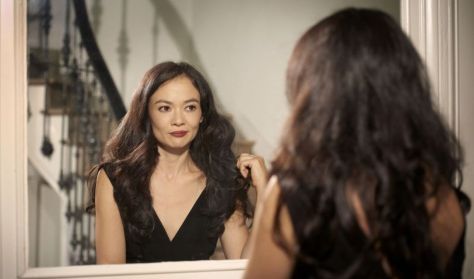
Baroque concert: Gibbons, Purcell, Lully, Corrette, Locke, Montéclair
Stefanie True (soprano)
artistic director and Baroque violin: Midori Seiler
Baroque gesture: Sigrid T’Hooft

Stefanie True (soprano)
artistic director and Baroque violin: Midori Seiler
Baroque gesture: Sigrid T’Hooft
Ön egy múltbeli eseményre keresett rá. Kérjük, válogasson aktuális kínálatunkból a Jegy.hu keresőjében!
Last event date on this page: Saturday, February 08 2025 3:30PM
Orlando Gibbons: Fantasia No. 4 for Two Violins
Henry Purcell: “Music for a While” – aria from incidental music to Oedipus, Z. 583
Jean-Baptiste Lully: Phaëton – suite, LWV 61
Michel Corrette: Comic Concerto No. 25 in G minor (“Les sauvages et La Furstemberg”)
Henry Purcell: Chaconne in G minor, Z. 730
Matthew Locke: The Tempest – suite
Michel Pignolet de Montéclair: Le Retour de la Paix (The Return of Peace) – cantata
The Budapest Festival Orchestra’s historic ensemble will take the stage to present works by six English and French composers. The “most versatile and outstanding figure of Baroque violin play”, and the musician directing the BFO’s early music concerts for years, Midori Seiler, has created a program featuring a fantasia, an aria, a suite, a concerto, a chaconne, and a cantata. The program kicks off with the violin duo by Gibbons, who broke with Renaissance tradition; following a selection of pieces from and parodies of Baroque operas and accompanying music, the program concludes with Montéclair’s secular cantata. The latter, and Purcell’s aria, will feature a solo performance by Canadian-born Stefanie True, a returning guest of the BFO. The journey back in time will be made complete by the use of authentic period instruments and costumes, as well as gestures choreographed by one of the top experts on Baroque gesture, Sigrid T’Hooft.
In Gibbons’ time, during the first decades of the 17th century, music served primarily as a carrier for the lyrics; the violin was a part of the accompaniment. With his six fantasias, the composer elevated the instrument and made it a soloist, in a way that advanced the virtuosity of Baroque instrumental music. The piece is a demonstration of juggling with imitations, rhythms, and motifs. John Dryden, a celebrated poet of the 17th century, was among those who adapted and told their version of the tragedy of Oedipus. In the third act of his heroic drama,
the priests looking for the perpetrator summon the spirit of the murdered king, and ask for the help of the gods of the underworld to do so. Purcell composed the “soundtrack” for this scene using a chromatically rising bass to depict the rise of Lajus.
The second book of Metamorphoses, Ovid’s narrative poem, begins with the story of Phaëton who, driving the chariot of the Sun, quickly meets a tragic fate after being momentarily empowered by his father, Helios. Lully’s opera in the tragédie en musique genre may be interpreted as a fable: no one can compare themselves to the Sun(king).
Michel Corrette composed the final piece of his series of 25 concerto comiques in 1773. The opening movement is an adaptation of the famous movement “Les sauvages” (The Savages) of Rameau’s opera ballet The Amorous Indies; the other two are based on parts of Jean-Jacques Rousseau’s opera Le devin du village (“The Village Soothsayer”).
A number of pieces of incidental theatrical music were composed during the English Restoration that was associated with Charles II, known for his passionate patronage of the arts. Although we have no information on which piece Purcell composed his chaconne for, the atmosphere of the music and its descending, repetitive bass serve as the forerunner to Dido’s famous Lament in Dido and Aeneas.
Matthew Locke, one of the most significant English composers of the 17th century, wrote instrumental music for a period opera based on Shakespeare’s The Tempest. The elemental force of the music to be heard before the curtain went up must have shocked the audience, and the composer did not go easy later in the piece either, when it came to surprising and extreme effects.
The first book in Montéclair’s collection of 24 cantatas ends with The Return of Peace. Composed in 1706 for soprano voice and a string ensemble, the eight movements of the piece tell the story of the evils of war, fate, anger, mistakes, heaven, radiance, efforts and trumpets.
1905. Elárverezik a párizsi Operaház teljes hajdani berendezéseit. Többek között egy csillárt, amely a kikiáltó szerint egy máig sem tisztázott baleset okozója volt. A baleset tetteseként az Operaház titokzatos Fantomját emlegették.
Aronsen művének középpontjában egy kusza szerelmi történet és a megállíthatatlan olvadás áll – kérdés, hogy kit melyik fenyeget jobban. A váratlan fordulatok, a tragikomikus helyzetek, a kitörő érzelmek és a végtelen tréfák lavinaként temetik maguk alá a szereplőket..
Hans Zimmer filmzenei koncert Budapesten! Ne hagyja ki ezt az egyedülálló estét, amely a legikonikusabb filmzenék világába kalauzolja el Önt.
A Modern Art Orchestra fennállásának 20. évfordulóját nagyszabású gálakoncerttel ünnepli december 28-án a Várkert Bazárban.
A „Pieces of a Woman” Mundruczó Kornél nagysikerű filmje Wéber Kata drámája alapján készült, melyet most először mutat be magyar…

item(s) in basket
total:
Time limit has expired. Please, put item(s) in to basket again.